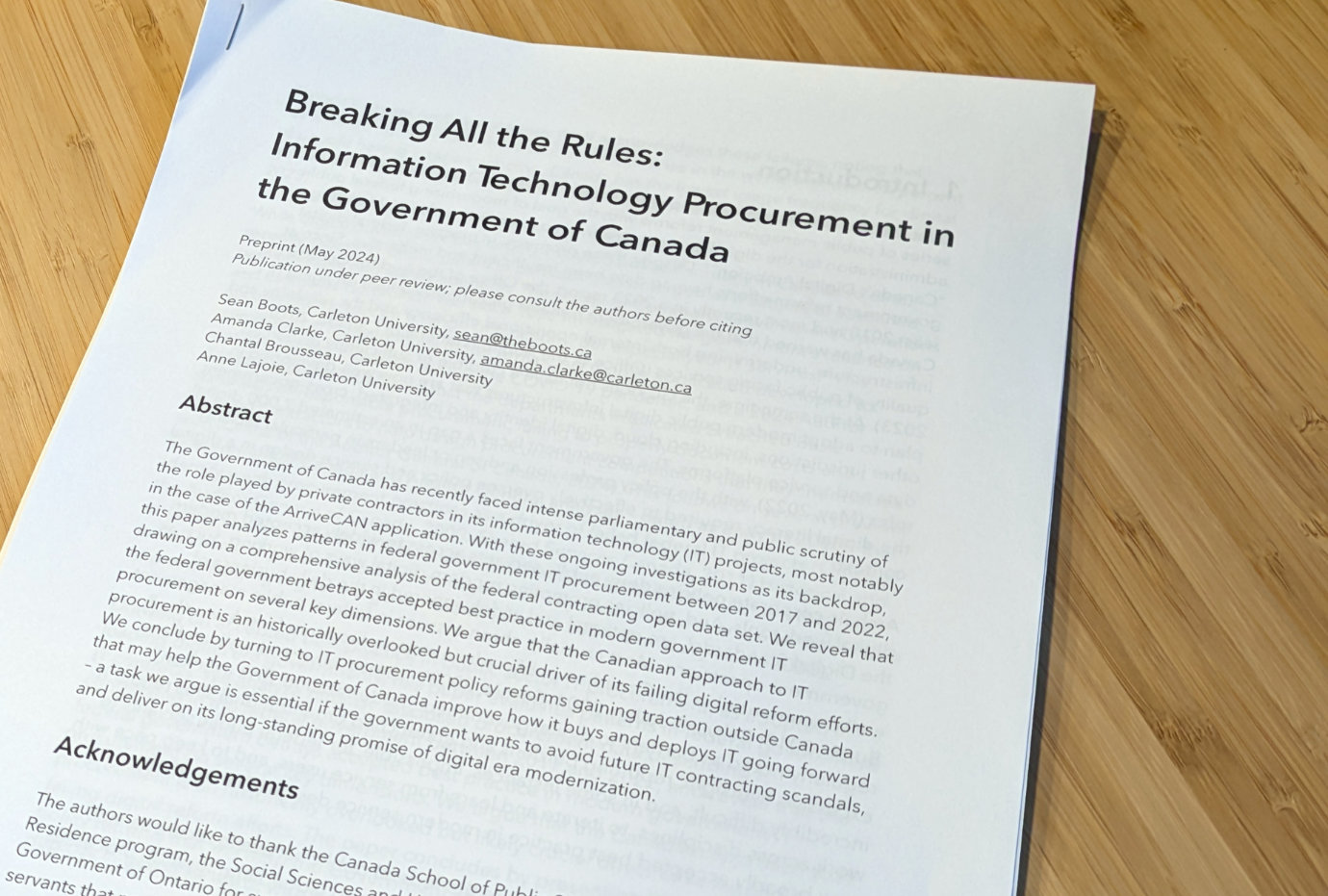Speaking at the Government Operations committee this Wednesday
On Wednesday, July 24, Prof. Amanda Clarke and I will be appearing at the House of Commons Standing Committee on Government Operations and Estimates (OGGO) to discuss the research paper that we recently shared as a preprint.
If you’d like to tune in you can watch via the ParlVU livestream starting at 11am Eastern Time (8am Yukon time). You can see recaps of our previous two OGGO appearances from Nov. 17, 2022 and Jan. 30, 2023.
The research paper builds on our analysis of Government of Canada procurement contracts and Guide to Reforming IT Procurement. As Prof. Clarke writes,
The tool and the research findings our team has drawn from it have been covered by iPolitics, Politico, the CBC news podcast Frontburner, and highlighted in analysis by journalist Paul Wells. Former Clerk of the Privy Council Michael Wernick endorsed the tool as “exactly the kind of initiative [Treasury Board] Minister Brison had in mind when he pushed forward open government and open data.” Sean and I were also invited to deliver expert testimony at two parliamentary studies of federal government contracting (including the inquiry into the ArriveCAN app) by the Standing Committee on Government Operations and Estimates, where we submitted the recommendations we outline in A Guide to Reforming Information Technology in the Government of Canada.
Today I’m happy to share the academic paper we developed using the tool (it’s still under peer review, so we share it now with that caveat!). In the paper we explain the role that IT procurement plays in supporting (or more often, preventing) digital government transformation, draw on international experience to outline a set of ‘rules’ for modern public sector IT contracting, and then assess the extent to which the Government of Canada adheres to these rules.
The punchline is – the federal government breaks almost all globally accepted best practice for modern public sector IT procurement, a reality which we argue helps explain why we have scandals like the ArriveCAN debacle that’s still unfolding. More importantly, we argue that unless we reform federal IT procurement so that it gets up to speed with widely accepted best practice in the field, any attempts to drive forward meaningful digital reform in the Government of Canada are bound to fail.
You can read the (preprint) paper here – we’d love to hear your thoughts and feedback!
It was wonderful to work with Prof. Clarke and her research assistant team, Chantal Brousseau and Anne Lajoie, on this project. I’m really grateful to the Canada School of Public Service and to my old team for the opportunity to be part of this. When we began the project in 2022, none of us expected a topic like IT procurement to reach the level of public and political interest that it has over the past year or two. It’s been a fascinating adventure.

Notable charts
If the paper seems like a dense read – here are a few standout charts from the data analysis (from pages 24 and 27 of the paper respectively).
Top 10 IT vendors by estimated contract value and IT subcategory (page 24)

Across the five years of the research analysis, three vendors (IBM Canada, Bell Canada, and Microsoft Canada) received more than $100 million per year in estimated contract value. Overall that’s $4.49 billion in total estimated contract value going to those three firms (in constant 2019 dollars to adjust for inflation), or 23% of overall IT contract spending.
Estimated IT consulting services contract spending by vendor (page 27)

When it comes to IT consulting service vendors, GCstrategies – the origin of much of the current political controversy around IT procurement – is 19th on the list (by 2021-22 total estimated contract value).
You can read more about the data analysis methodology, or check out the R analysis source code on GitHub. Prof. Clarke’s 2022 FWD50 presentation is also a great overview of our initial research findings (you may need to create an account on the FWD50 Access website).
But this week – if you haven’t read it yet (academia for the win!) – read our preprint paper and, if you’d like, tune in on Wednesday to hear Prof. Clarke and I speak at the OGGO committee. We’re looking forward to being there.